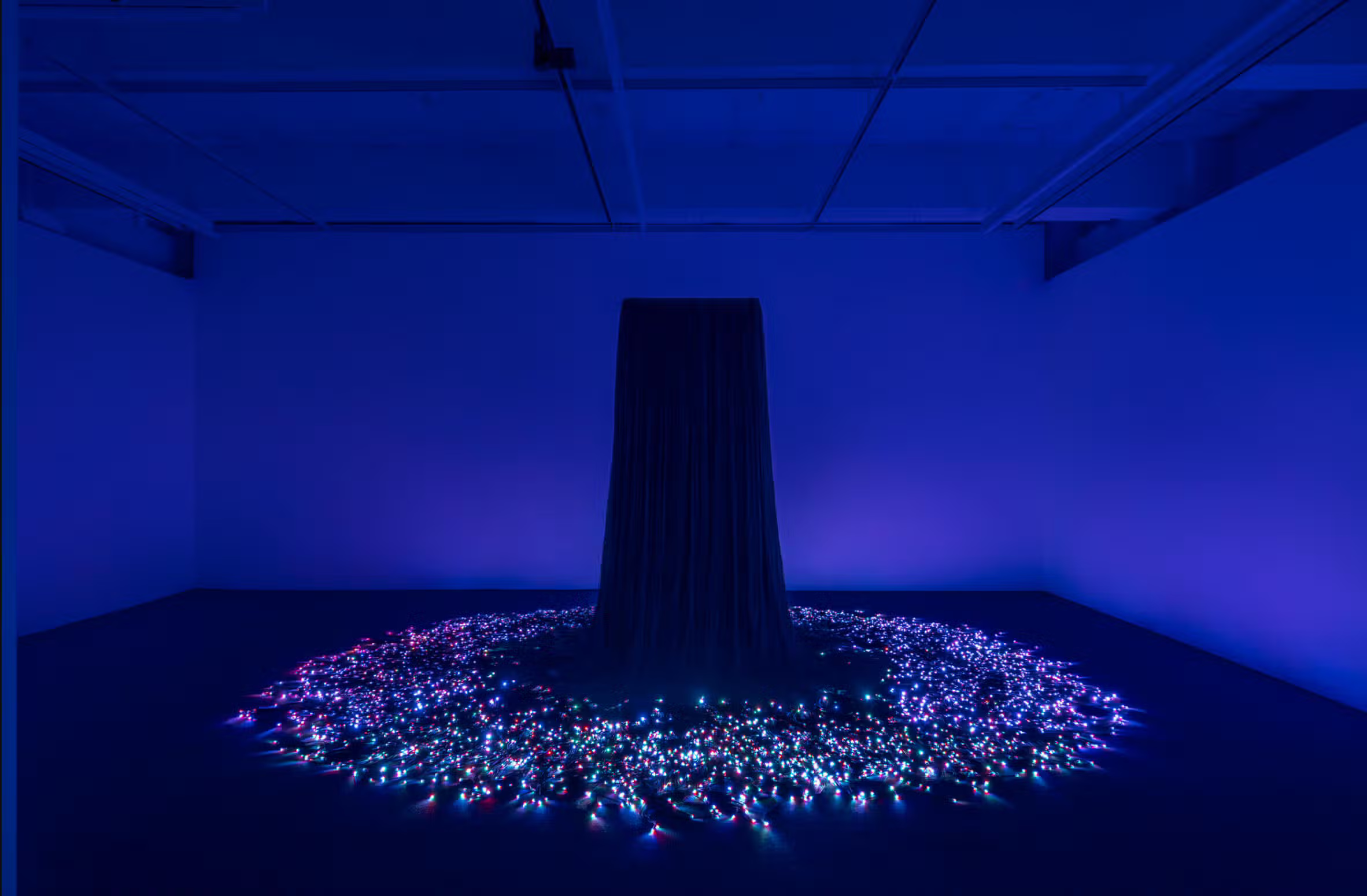
Doki Kim, Umbra, 2024. Image courtesy of the artist and Gallery Baton.
At Gallery Baton in Seoul, an immersive universe undulates between human and extraterrestrial. The world, as seen by the South Korean artist Doki Kim, glows blue and expansive, but it is the intimate connections to human life and materiality that resonate most. Shapes shift and meaning resonates from every angle throughout the gallery for “The Apple and The Moon,” which opened last week and runs until September 14, 2024. In one dark room, lights are strewn across the floor. Elsewhere, wax congeals like mountains and oceans. Screens flicker star-spangled and ablaze.
For an American like myself, there is an elusive quality to writing about Kim—the 44-year-old artist who lives and works in Busan, Korea and has only exhibited in her home country and Japan—with only images and videos for reference. Her recurring materials include heaters (turned on), paraffin wax, stainless steel, and LED lights, which push up against each other in compelling ways. While visuals of the artist’s large-scale installations keep a static record of works in flux, the objects themselves are animated: breathing, sparkling, steaming, melting, twitching under Kim’s deft hand. Each installation beckons a closer look and begs an in-person view.
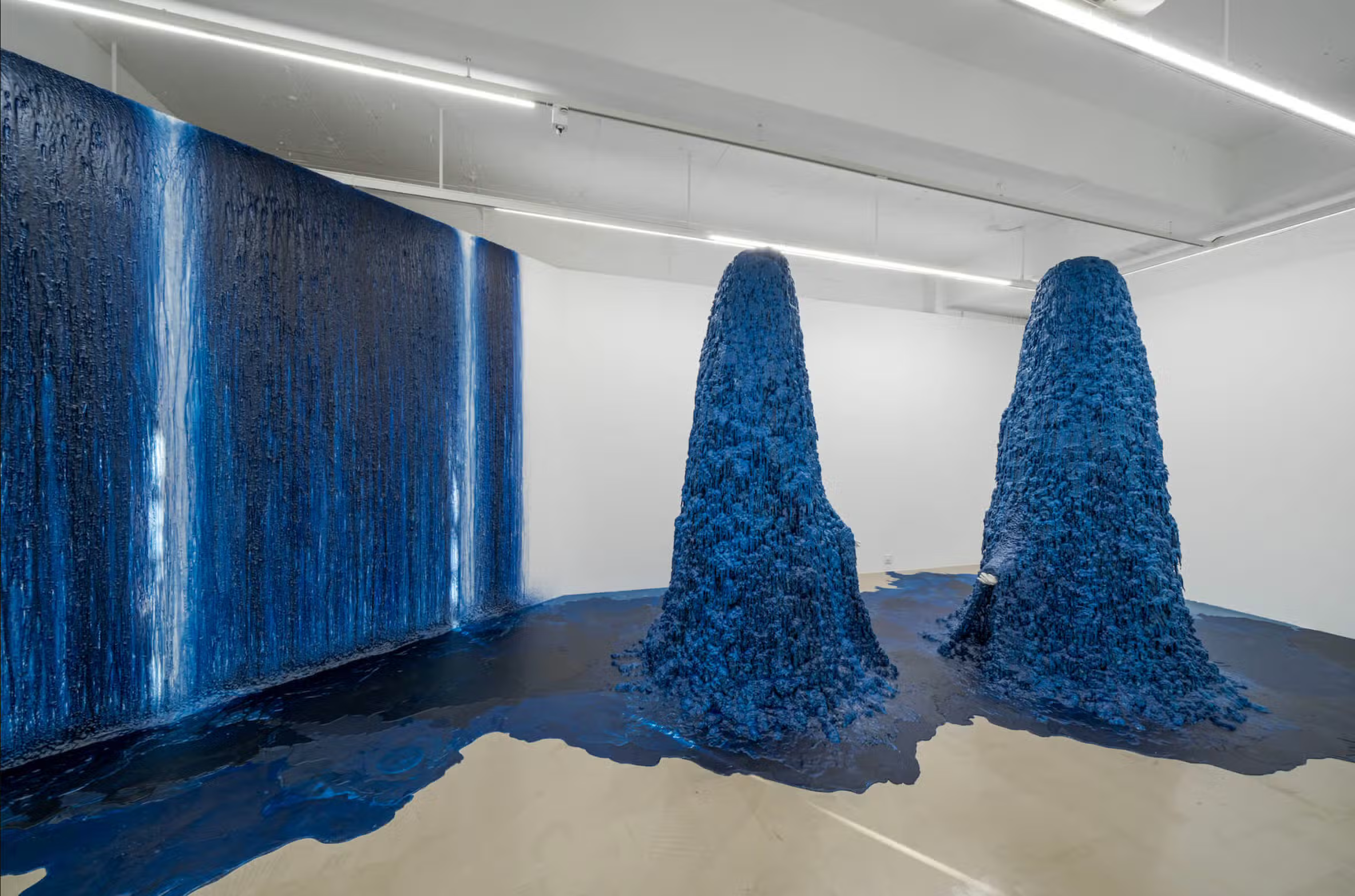
Doki Kim, To Night, From Night, 2024. Image courtesy of the artist and Gallery Baton.
In one monumental media-sculpture at Gallery Baton, Umbra, 2024, an enigmatic video is deconstructed to cosmic ends. Black cords from LED display modules tower in an architectural, rectangular structure and cascade into a waterfall of pixelated, atom-like blue light on the floor. A similar work from 2018, Quantum Dream, glowed ultraviolet from bits of a fragmented video, while speakers played the original audio—nine stories of everyday life that begin with childbirth and end with funeral. Peel back the layers of the celestial and conceptual in Kim’s practice, and the human emerges.
In the cerulean installation, To Night, From Night, 2024, wax drips from the wall, pools over the ground, and piles over two white figures; only their hands poke out from the mountainous wax, reaching towards each other, protected or oppressed. Elsewhere, small, square screens are scattered across two perpendicular walls in an installation titled Partial Solar Eclipse, 2024. Black-and-white images of views of space fade into a scene of an apple on fire. This work, as well as the exhibition’s title, references Newton’s law of universal gravity, which, as the story goes, the physicist came to after he was struck in the head by an apple while lying under a tree and realized that the same force that caused the fruit to fall—gravity—also keeps the moon in orbit around the Earth.
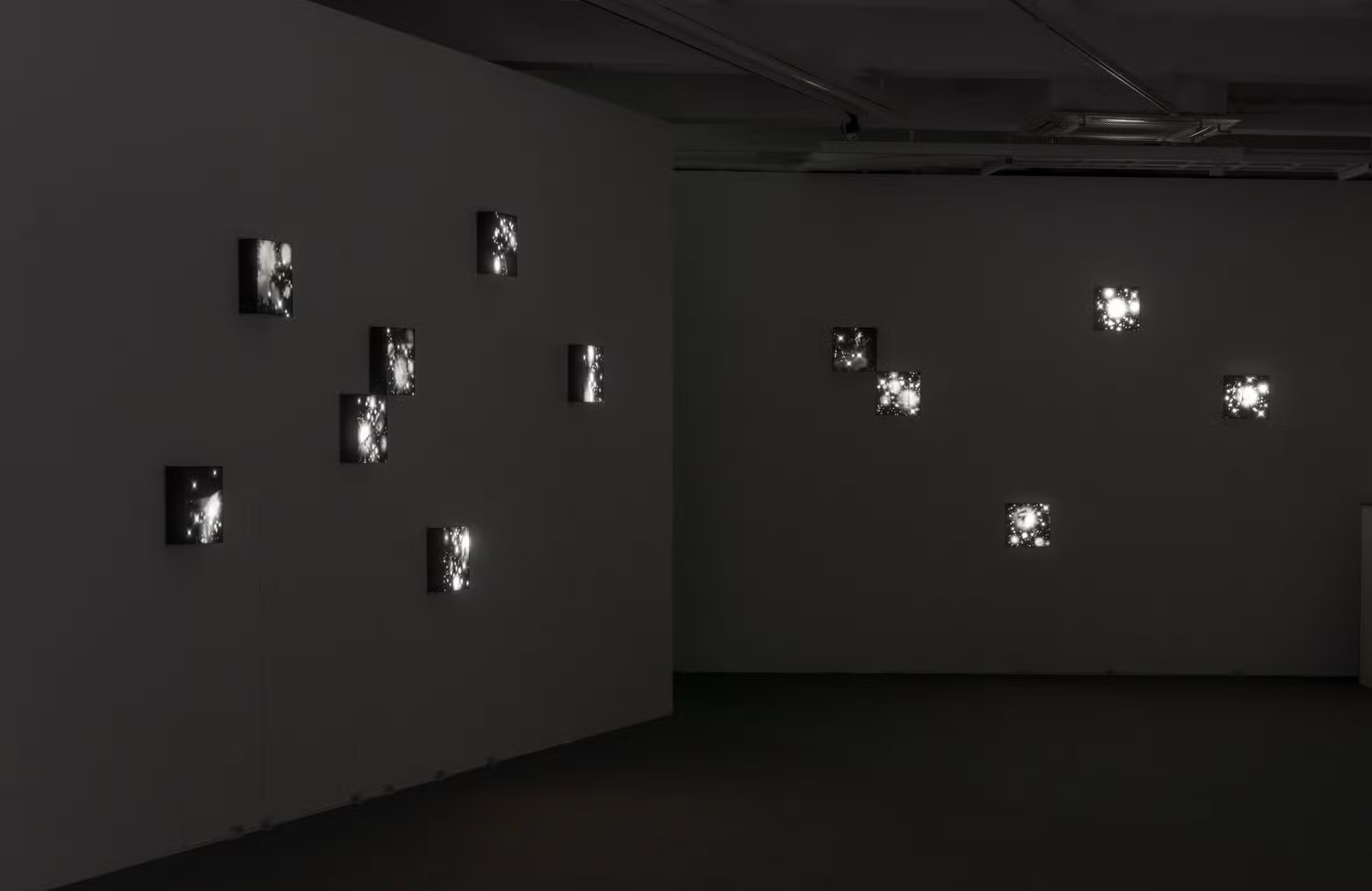
Doki Kim, Partial Solar Eclipse, 2024. Image courtesy of the artist and Gallery Baton.
To encounter a Kim installation is to get hit in the head with an apple and undergo an act of discovery that leads to a shift of perception. As eyes scan a room, new forms materialize in shadows and light. At a closed-down Tsushima City Kuta Elementary School in Japan in 2016, she placed a series of small mountain-shaped resin objects on glass pedestals and illuminated them with LED lights that cast shadows of natural organisms birds, butterflies, lizards, and a fetus onto the ceiling, inspired by the Cheondo religion’s practice of worshiping nature. Two years later, for The Sea Touching the Beach, she placed an old landline phone on a small stack of books at the same school and called twice a day at high and low tide. Visitors who happened to be in the otherwise empty room at the right time could reach the artist directly. For her final installation in the classrooms in 2019, she placed glass orbs atop books that contained writings on marine organisms that change gender spontaneously in response to the environment. Every mention of sea bream, abalones, and razor clams was replaced with “children.” As Kim wrote of the children referred to in the installation: “These individuals exist but are hidden by societal constraints and discrimination.”
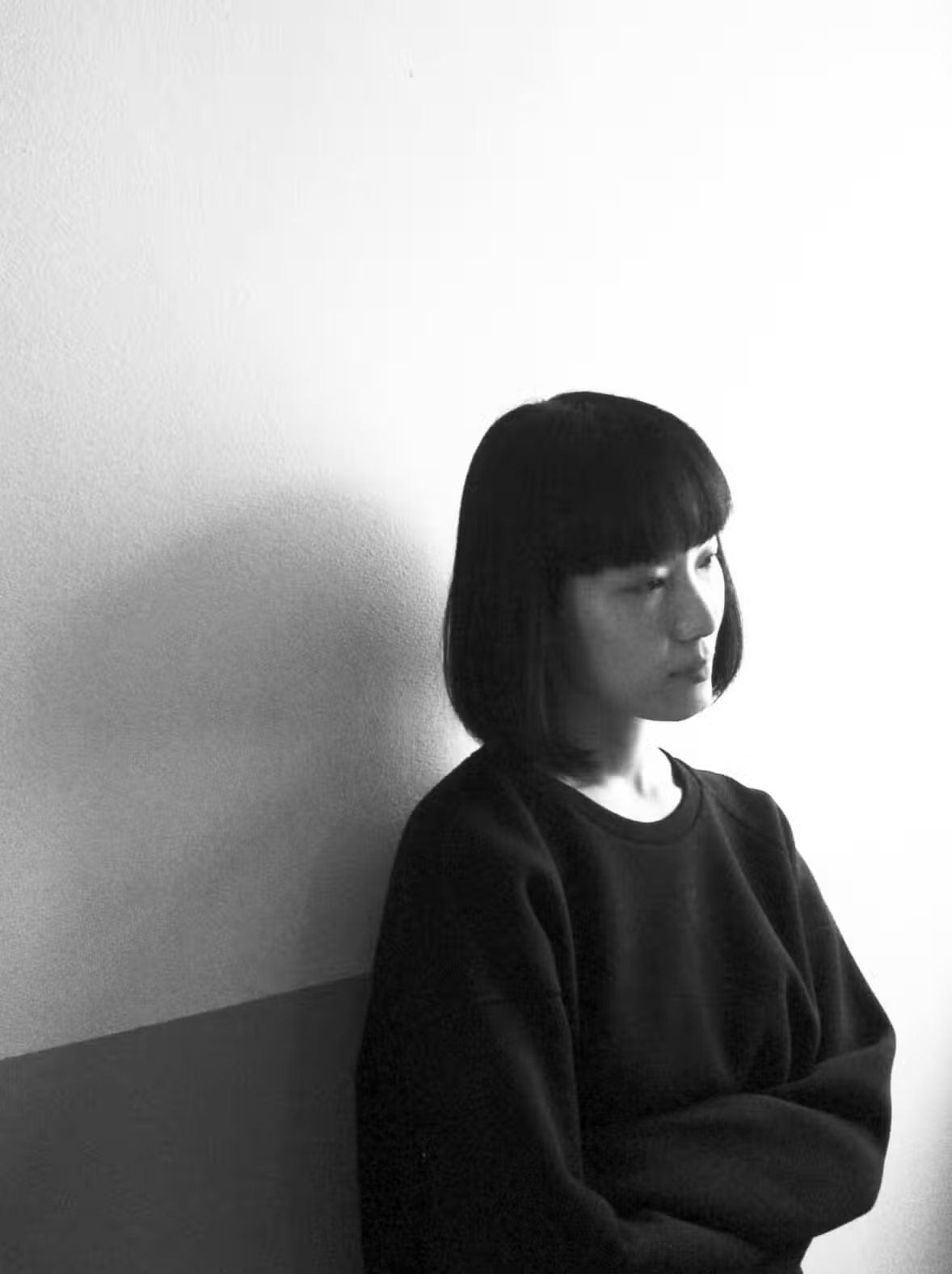
Portrait of Doki Kim. Image courtesy of the artist and Gallery Baton.
For all the engagement with thermodynamics and physics, Kim’s installations are deeply human—as alive as it gets without implicating the artist. An amalgamation of the world she so astutely witnesses. Her practice integrates the conceptual and corporeal: the macro and the micro. Locations are intervened, excavated, and uprooted—Kim has created installations on beaches and forest floors, in abandoned classrooms and dilapidated buildings. In a striking and sparse installation in 2021, she filled empty, concrete rooms with white wax and lit a wick on the floor. When presented with the white walls of a gallery, she meticulously places objects that are both austere and metamorphic: heaters coated in wax, melting. A metal bed frame with a pocket of holes poked in the middle, steaming. A beam of light above a pile of glass sand, glowing. A poem might emerge, upon touch, from a scrap of fabric dyed in heat-sensitive pigment; or water absorbing beads might swell and spill over from a cup onto the floor. Transformation is everywhere.
Doki Kim: “The Apple and The Moon” is on view until September 14, 2024 at Gallery Baton at 116 Dokseodang-ro, Yongsan-gu, Seoul, Korea 0442.










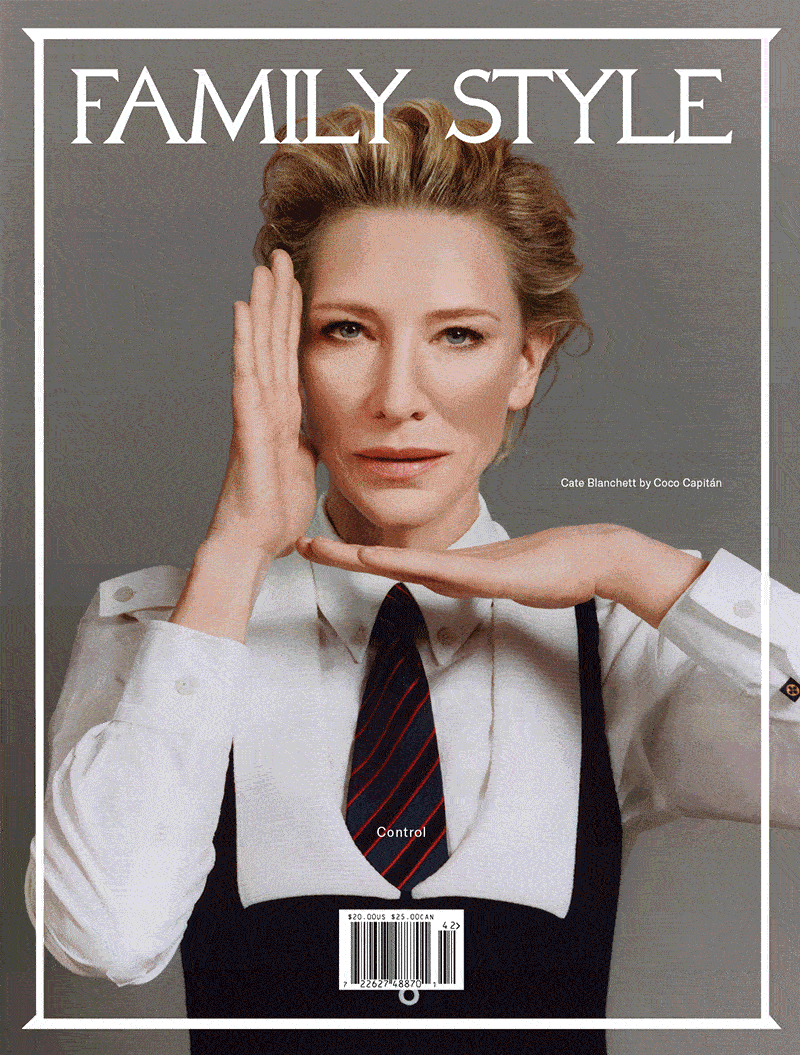


.avif)

